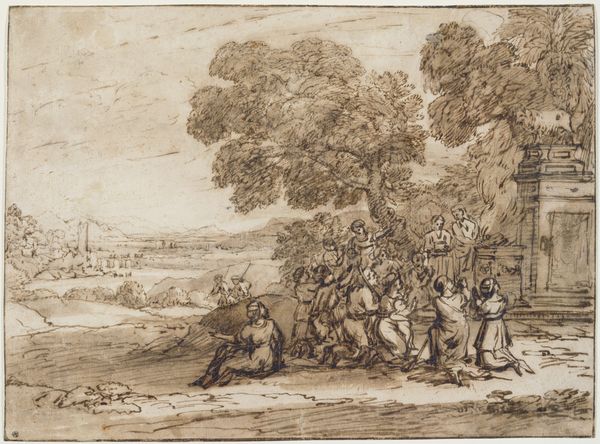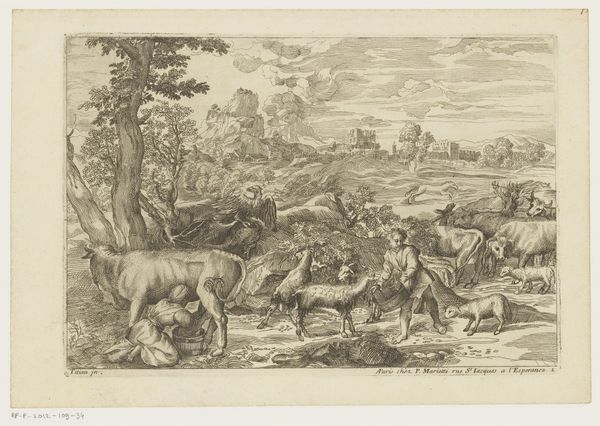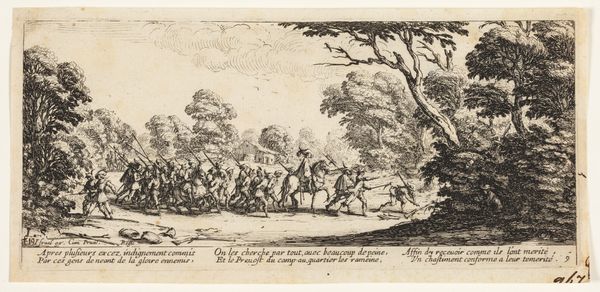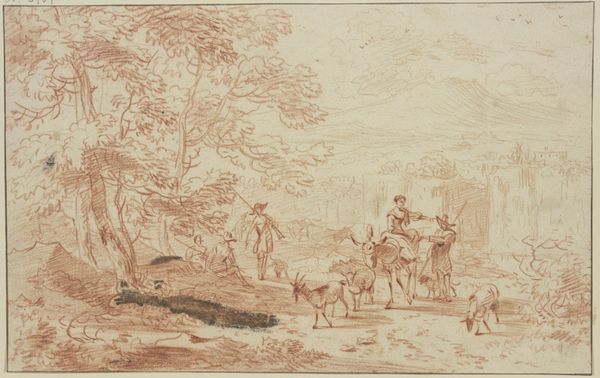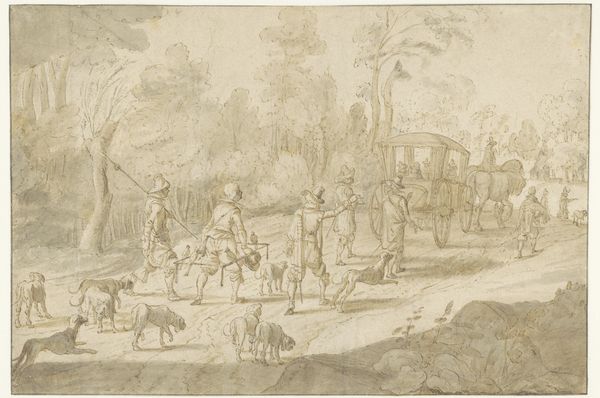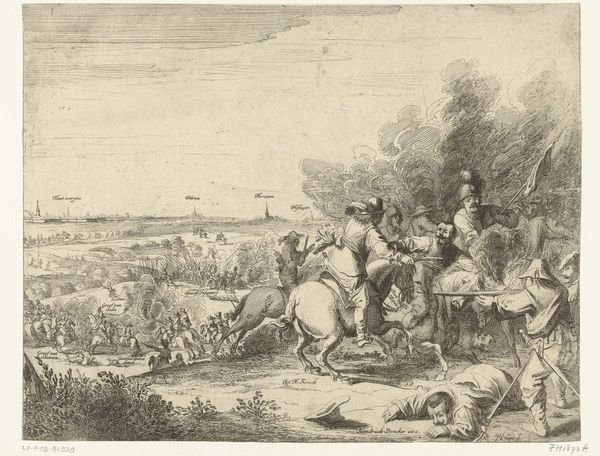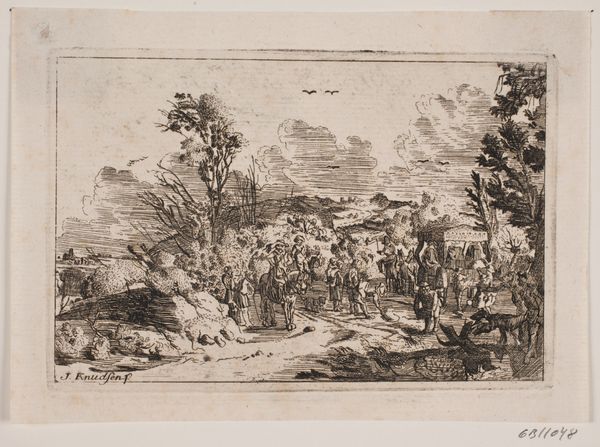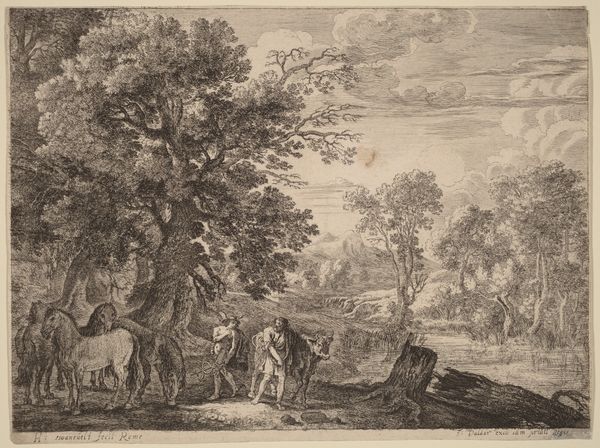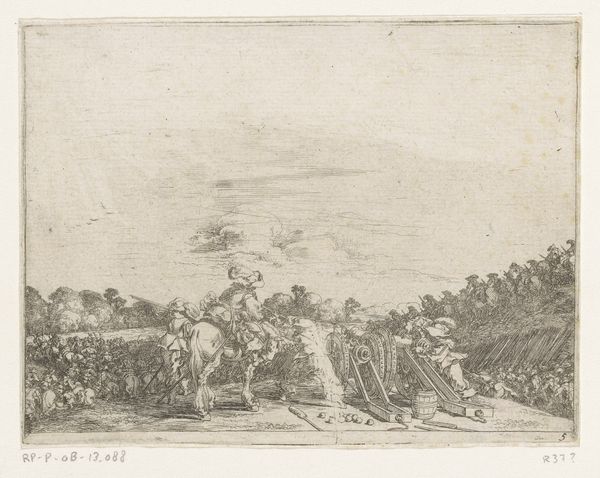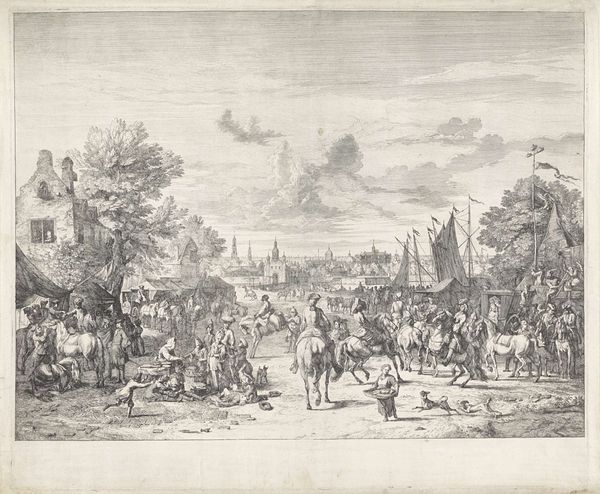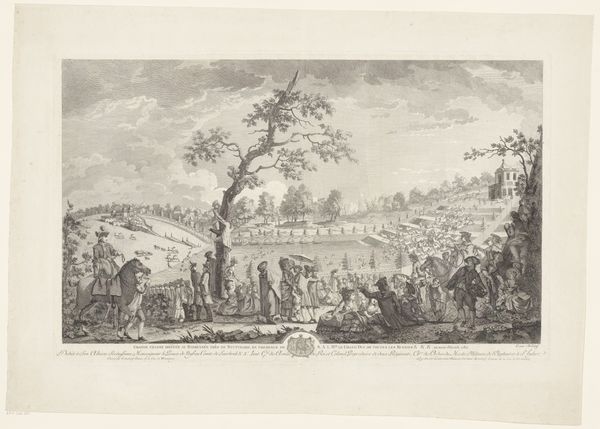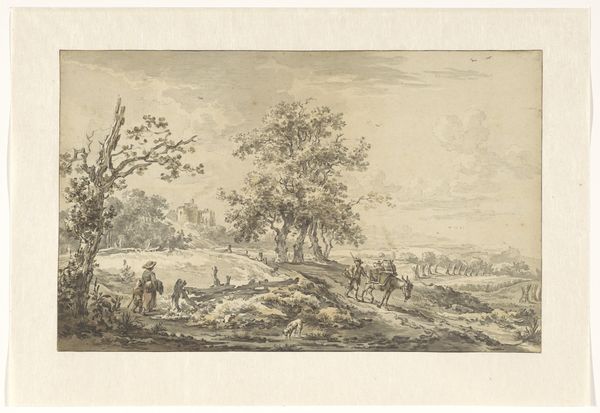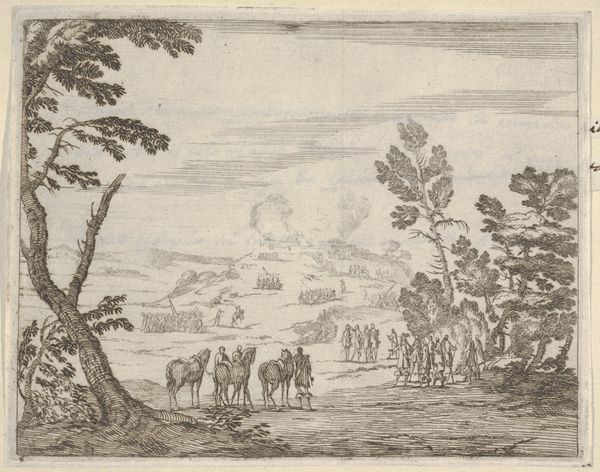
The Arrival of the Princely Carriage at the Starting Point of the Hunt 1751 - 1761
0:00
0:00
drawing, print, ink
#
drawing
#
ink drawing
#
baroque
# print
#
caricature
#
landscape
#
figuration
#
ink
#
history-painting
Dimensions: sheet: 9 1/2 x 18 in. (24.1 x 45.7 cm)
Copyright: Public Domain
Curator: What an exquisitely rendered scene! It has such vivacity and an attention to detail. Editor: It’s incredibly busy; my eye struggles to find a point of focus amongst all of those horses and figures. Curator: Quite! This is "The Arrival of the Princely Carriage at the Starting Point of the Hunt" made by Johann Elias Ridinger sometime between 1751 and 1761. Currently, it's held at the Metropolitan Museum of Art. Look at the technique, the use of ink, transforming a common recreational event of the European elite into something so refined. It begs us to delve into the sociopolitical context of hunting. Editor: Yes, let's look at the use of ink to establish lines, patterns, and the gradations that capture texture. Beyond this being an ink drawing or print, which lends itself to multiple reproductions, what are the class dynamics inherent in its imagery and how might those things together affect distribution? Is this simply the realm of the elites or is it intended for circulation and appreciation by a wider audience? Curator: Hunting at this time was, fundamentally, a performance of power. Ridinger's work captures not just the aristocracy's leisure, but also reinforces the social hierarchy and dominance. It mirrors ideas within aristocratic European society—emphasizing their divine right, the natural order. Look at the way the commoners are represented, almost like decorative elements on the fringes. Their very humanity is lessened. Editor: Indeed. And we might look more closely at the material realities of hunting: the land enclosure movements, the labor needed to maintain these hunting grounds, the skilled artisans creating the weapons and equipment for the hunt, the carriages. The composition almost mocks their forced attendance. Each horse, each meticulously etched wheel and textile speaks to considerable resources at play and begs questions around its impact on the broader population. Curator: Absolutely. Considering this piece from a feminist perspective, for example, what narratives are subtly reinforced regarding women’s roles? Is she merely present as a spectacle or is there perhaps more to uncover when we consider the implications of women's representation within this structured display of power and hierarchy? Editor: Considering all that's on display in "The Arrival," the question remains: what about everything that isn't on display, all that labour it takes to create the moment? The labor of representation itself shouldn't be ignored. Curator: Very well put. Thinking about it through that lens makes me consider anew how artistic practice both mirrors and potentially challenges social structures. Editor: Exactly. By focusing on materials and the modes of production, we unveil deeper social contexts.
Comments
No comments
Be the first to comment and join the conversation on the ultimate creative platform.
